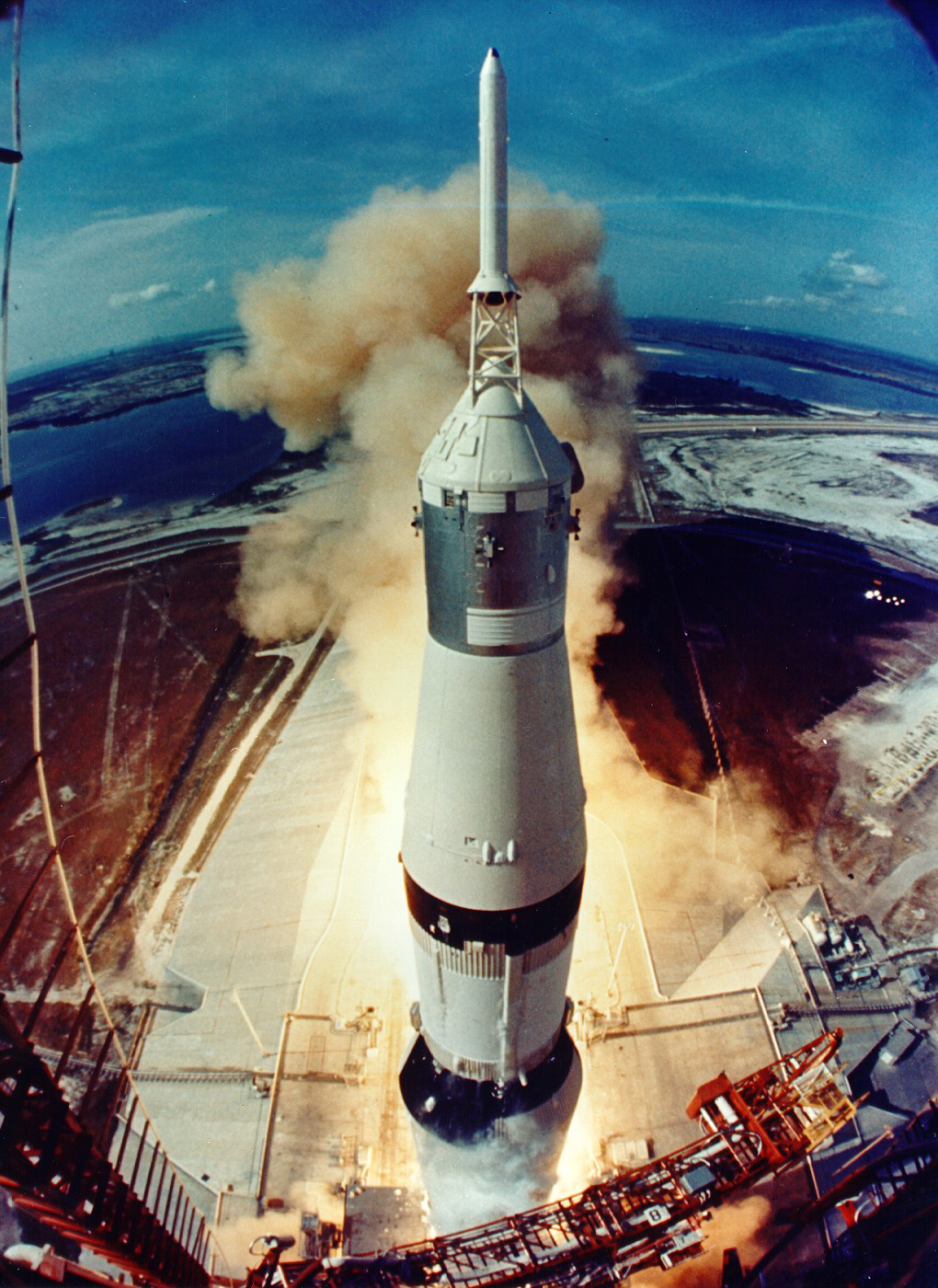What influence did the Apollo space program have on NASA?
Apollo 11 capsule on top of the Saturn V rocket launcher.

Their administrators had admitted that the space shuttle program was not the right path to take after the Apollo Moon effort. In the beginning they lied to themselves believing they could operate the shuttle cheap, fast and safe. In reality, NASA was never able to deliver their original dream of sending a "space truck" to Earth´s orbit twice a month.
One of the reasons was because of the low flight frequency; shuttle missions were incredibly expensive with an estimate of $750 million per flight. The shuttle's complexity was an achievement but also a liability. The program was too expensive and too URL2 many engineers working on for a quarter-century in what turned out to be a technological dead end.
NASA went with the "all things to all people" approach in the 1970's when Nixon vetoed their plan to set up Moon bases and the flight to Mars. NASA was not ready in 1972 (and is not ready in 2009) to build a vehicle that combined carrying people and carrying cargo, with a high degree of reusability and could serve to any kind of mission. That´s why NASA is returning today to the old path with the Constellation Project which is heavely influenced by the Apollo program.
Constellation is taking old technologies and proven platforms to build the Ares I and Ares V rocket launchers, using a combination of Shuttle´s solid propellant Side Rocket Boosters (SRB) and ventral External Tank (ET) with the J-2 and RS-68 rocket stage engines and Space Capsule derived from the Apollo program. Diagram of Saturn V and Shuttle heritage vehicles with the derived components to be used in the Constellation launch vehicles. http://www.tallgeorge.com/images/projectconstellation/DerivedComponents_jpg.
The mechanics of landing on the moon and getting off the moon to a large extent is the legacy that Apollo gave NASA. -quote- "Replacing the Space Shuttle following its retirement in 2010 will be the Orion crew capsule, which closely resembles the Apollo command module in its aerodynamic shape. NASA administrator Michael D.
Griffin has described the capsule as "Apollo on steroids," and the New Scientist magazine reports that "some critics... say the whole Orion program is little more than a throwback to Apollo-era technology. " In other respects, however—including its cockpit displays and its heatshield—Orion will be employing new technology. More closely based on Apollo designs is the upper stage of the Ares I, the launch vehicle designed to take Orion into orbit.It will be based on a J-2X engine, a redesigned version of the J-2 engine used in the Saturn family of boosters.
In working on the J-2X, NASA engineers have visited museums, searched for Apollo-era documentation and consulted with engineers who worked on the Apollo program. "The mechanics of landing on the moon and getting off the moon to a large extent have been solved," said Constellation program manager Jeff Hanley."That is the legacy that Apollo gave us. " -end of quote.
While their existence is a source of pride, we must realize that America did not create the space program with the idea of gaining these collateral benefits. But through its proven record of developing new technologies, it is likely that in the next 50 years NASA will continue to inspire whole new industries, revolutionize existing ones, and create new possibilities for the future, benefiting people everywhere. Howard Ross also contributed to this article.
I cant really gove you an answer,but what I can give you is a way to a solution, that is you have to find the anglde that you relate to or peaks your interest. A good paper is one that people get drawn into because it reaches them ln some way.As for me WW11 to me, I think of the holocaust and the effect it had on the survivors, their families and those who stood by and did nothing until it was too late.
Related Questions
Why is the Greek god Apollo named Apollo?
Why did Obama end the NASA space shuttle program?
Will NASA build another space shuttle if a piece of the international space station gets damaged?
IF? something has to be replaced on the International space station Will NASA build a new Space Shuttle to?
Like earth and other planets are under the influence of sun. Under what influence does the sun exists in space?
After 30 years - NASA'S Space Shuttle Program is shutting down. Do you think that's a wise decision?
